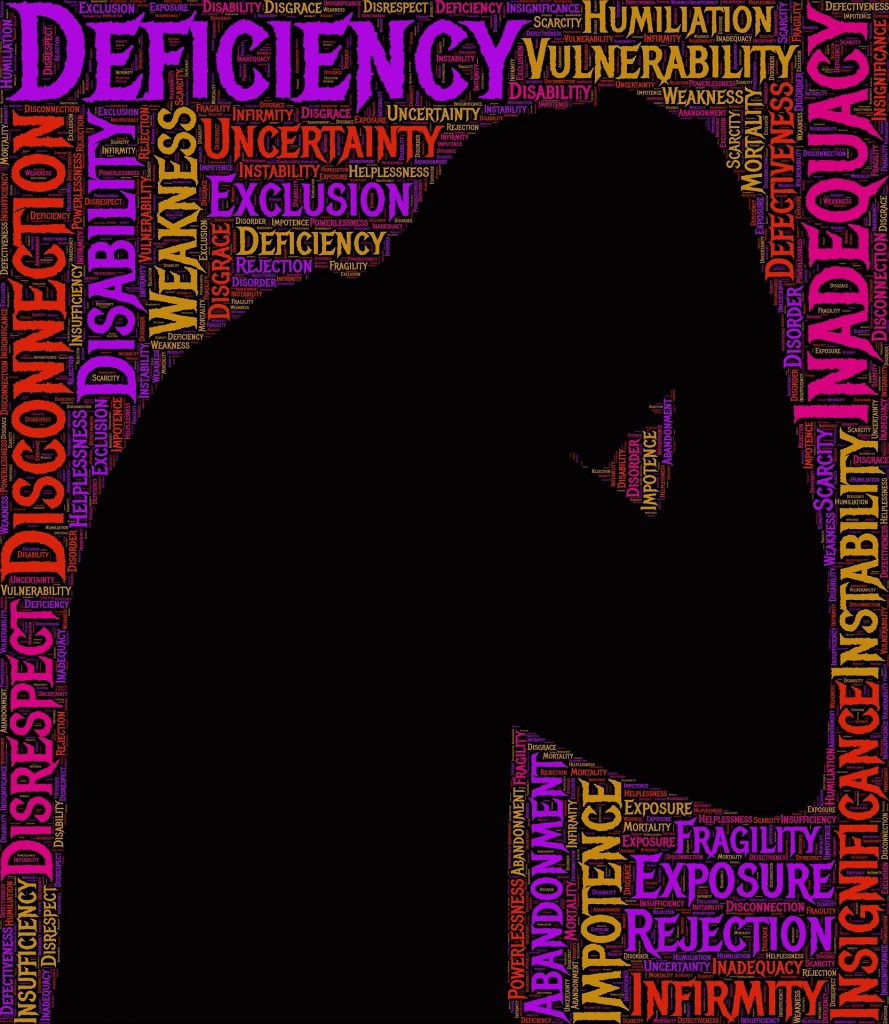by Dr. Amber D. Gray, DBH
Domestic violence is about power and control (Gosselin, 2018; Walker, 1979; Walker, 2000). While no single theory fits the totality of the nuances of domestic violence, an abuser’s need for power and control is the one thing that remains consistent. One party often lacks adequate interpersonal skills or is dysfunctional in their relationship, which leads to feelings of inadequacy and resentment (Gosselin, 2018). The abuser’s bottled up feelings, resentment, inadequate skill for expression and verbalization can lead to various acts of violence. To find a way to feel in control, the abuser wants to elevate themselves above the victim. Abusive people often suffer from low self-esteem. They are not able to control their feelings of not being good enough, or not being the best. This is especially prevalent if their partner is engaging in furthering their education or making self-improvements. The abuser may lash out at the victim, while the victim is unaware of the abuser’s feelings of deficiency. As a result, an abuser uses coercive control tactics to maintain perceived power. Coercive control in domestic violence is the manipulative, self-serving tactics an abuser uses, to create an unequal power dynamic in their relationship. It leaves victims feeling as though there is no way out of their situation.
Feelings of Inadequacy

There is no doubt that an abuser may have had a difficult childhood. This is true for a lot of individuals who are abusive in their relationships. It is also probable, that as a child, an abusive person was made to feel less than human. This in no way excuses their behaviors. The narcissistic tendencies that are developed by abusers stem from a void the abuser feels in their sense of self. This void is endless, and no matter how many tactics the individual tries to utilize to fill the void, it never happens.
The individual is left with a poor sense of self, low self-esteem and feelings of inadequacy. In their relationships, these types of individuals will use coercive control to avoid the feeling of being out of control. In some instances, a person with abusive behaviors will start to internally blame their partner for their perceived shortcomings. They build disdain and contempt for their partner. This is sometimes the catalyst for more abusive behaviors, which could be physical, emotional, verbal, or financial. It is not because the victim of abuse is doing anything wrong. It is never the victim’s duty to “help rebuild,” “help regulate,” or “build the esteem,” of the abusive individual. The abuser’s feelings of inadequacy is their issue to sort out.
Controlling Behaviors and Coercive Control
When an abuser is feeling out of control, their behaviors towards the victim becomes worse. They may isolate their significant other from their friends and family. They may engage in tactics that illicit fear in the victim. The victim may endure shouting, threats of further violence, have things thrown at them, experience constant gaslighting, or they are physically harmed. This is all in an attempt for the abuser to control their partner and their environment. Remember, an abuser has little to no ability to resolve conflicts. They are unable to communicate their feelings and emotions well.

They may use outlandish or exaggerated behaviors, mocking the victim, or create an emotionally hostile environment. The goal behind their behaviors is ultimately control. The victim is often left paralyzed, trying to understand their circumstances or assess why they feel as though they are in danger. The abuser will then take no responsibility for their actions. Instead, they will blame the victim of violence. They will place the victim in a bad light and attempt to make the victim take the blame for all of their actions. For example, phrases like, “See what you made me do,” “If you had not done this, I wouldn’t have done that,” and, “You were so abusive to me, I was only trying to defend myself from you,” are used to absolve the abuser of wrongdoing. It places the victim in a situation, where they are confused and unsure of what has occurred. The abuser gets a temporary sense that they have regained control, and a temporary boost to their esteem and ego. Without the abuser seeking help, the cycle will repeat again.
Escalating the Fight and Blaming the Victim

Abuser’s escalate volatile situations on purpose. They lure the victim into an argument, dispute, or altercation, so that they can exhibit abusive behaviors. Victims who do not understand what is happening in their relationships, do not understand the cycle of violence. They are not sure how it starts, and they certainly do not have the resources to figure out how to help themselves out of their situation. An abuser will capitalize on a victim’s personal history, triggers, and the emotional binds between the two.
The abuser will further damage a victim’s sense of self-worth, and autonomy, so that they, in their moments of violence, feel superior to the victim. The victim may hear remarks about their family, their illnesses, their economic situation, or a flaw they may have. In more extreme situations, the abuser may increase their hostility, throwing things out of rage. This creates feelings of not being safe for the victim. Consequently, If the victim feels unsafe, they are less likely to plan a next step, and will focus on surviving. A victim may shutdown, get depressed, or disengage from the volatile situation to self-preserve. Finally, in circumstances in which an abuser wants more intimacy with the victim, the victim may not be able to engage in intimate moments. This is because of past incidences of coercive control and violence with the abuser. The victim can not forget the behavior of the abuser, and is not able to be intimate with them. The abuser now does not know how to initiate intimacy. They build up resentment towards their partner. They use violence to build emotional distance, so they won’t have to feel the pain and anxiety of not having the control to regain those intimate moments. The abuser will not take responsibility for their poor behavior.
Browning & Dutton, 1986; Dutton & Corvo, 2006
“Violence may serve to relieve tensions, creating emotional distance because of fear of intimacy, the impending loss of control, or anxiety.”
The Bottom Line Is Control
Everything comes down to an abuser wanting to control their partners. Achieving this is a process. Victim-survivors will tell people, that the control started off subtle, and then became blatantly obvious. The abuser may have issues with abandonment, attachment, or have even had their own past traumas. This does not make their coercive control tactics okay. Individuals who are trapped in relationships with individuals who use coercive control tactics are living in a private hell that few people understand.
References
Ali PA, Dhingra K, McGarry J. A literature review of intimate partner violence and its classifications. Aggression and Violent Behavior. 2016;31:16–25
Cook SL, Goodman LA. Beyond frequency and severity: Development and validation of the brief coercion and conflict scales. Violence Against Women. 2006;12:1050–1072.
Crossman KA, Hardesty JL. Placing coercive control at the center: What are the processes of coercive control and what makes control coercive? Psychology of Violence. 2017
Crossman KA, Hardesty JL, Raffaelli M. “He could scare me without laying a hand on me”: Mothers’ experiences of nonviolent coercive control during marriage and after separation. Violence Against Women. 2016;22(4):454–473.
Goodman LA, Smyth KF, Borges AM, Singer R. When crises collide: How intimate partner violence and poverty intersect to shape women’s mental health and coping? Trauma, Violence, & Abuse. 2009;10:306–329
Gosselin, D. K. (2000). Family and Intimate Partner Violence: Heavy hands: An introduction to the crimes of domestic violence. Springer Publishing.
Gosselin, D. K. (2018). Family and Intimate Partner Violence: Heavy hands: An introduction to the crimes of domestic violence. 6th Edition. Pearson.
Tanha M, Beck CJA, Figueredo AJ, Raghavan C. Sex differences in intimate partner violence and the use of coercive control as a motivational factor for intimate partner violence. Journal of Interpersonal Violence. 2010;25:1836–1854.
Walker, L. (2000). The Battered Woman Syndrome. 2nd Ed. Springer Publishing Company.
